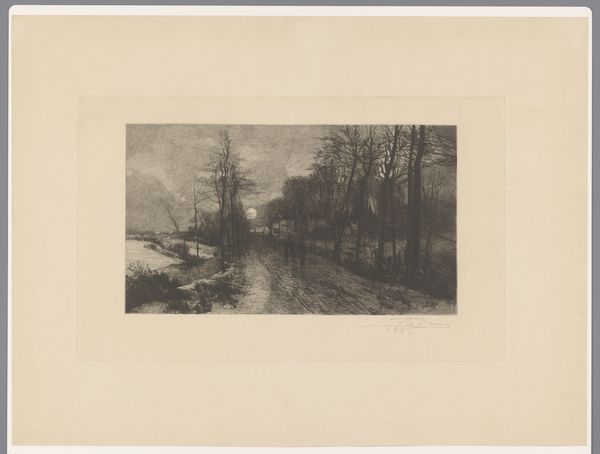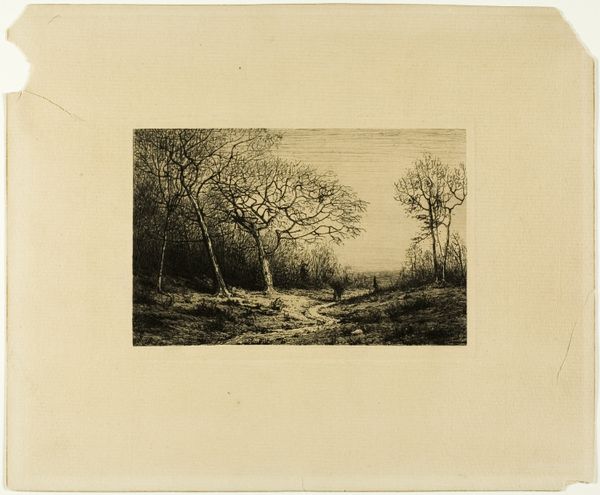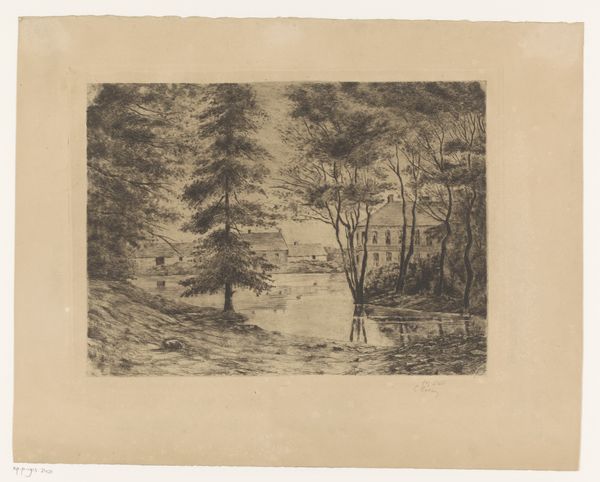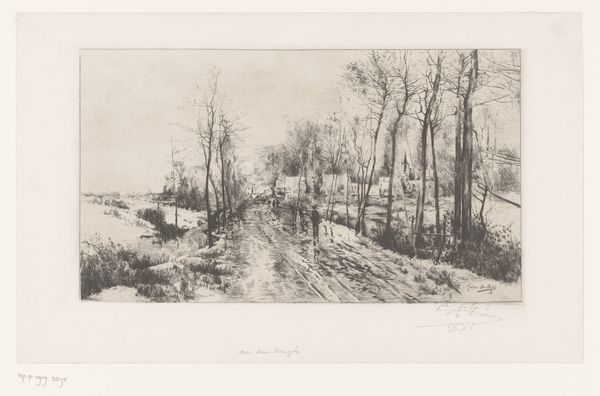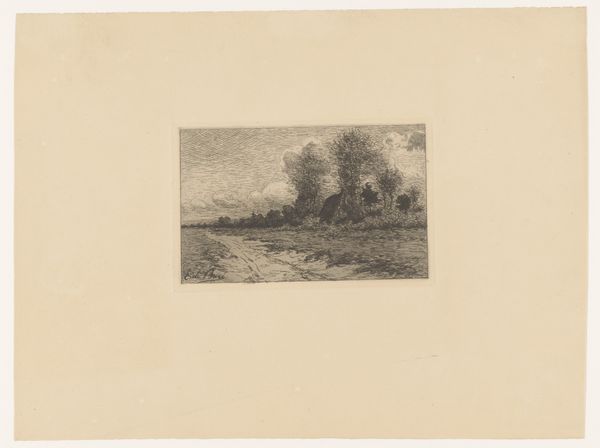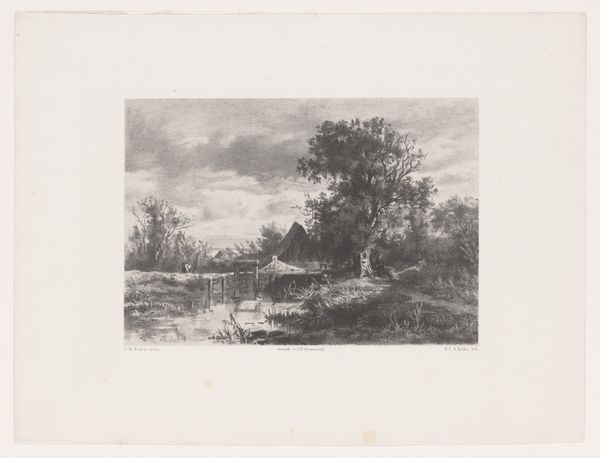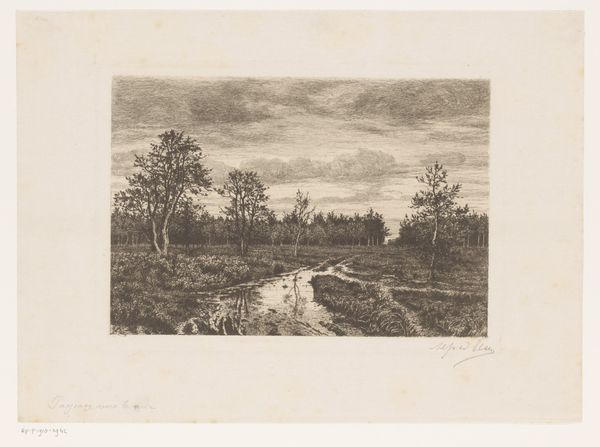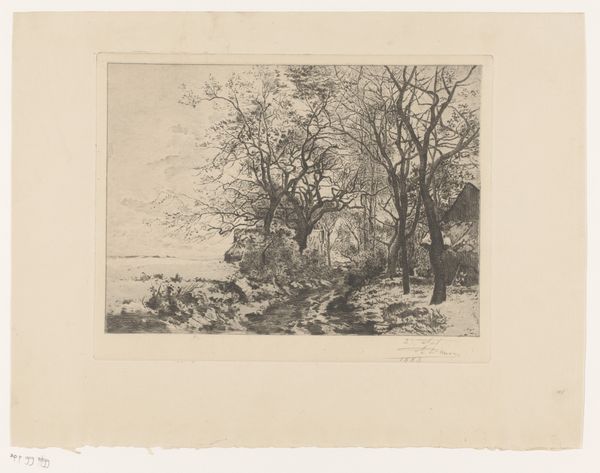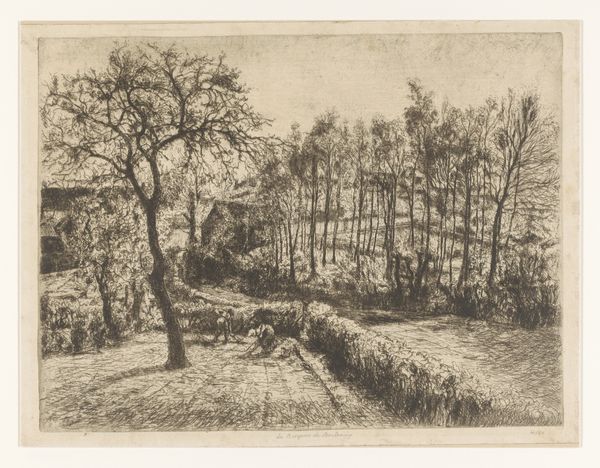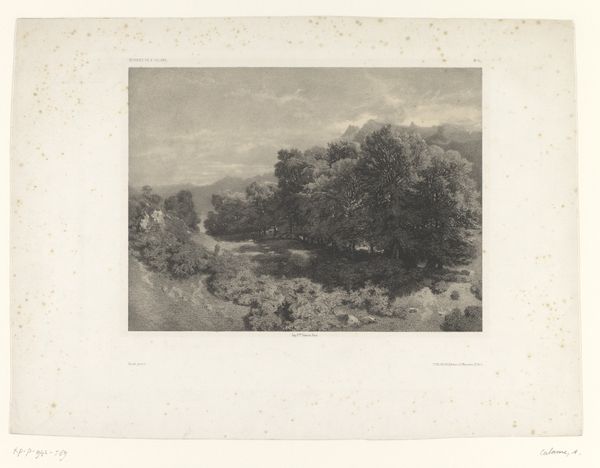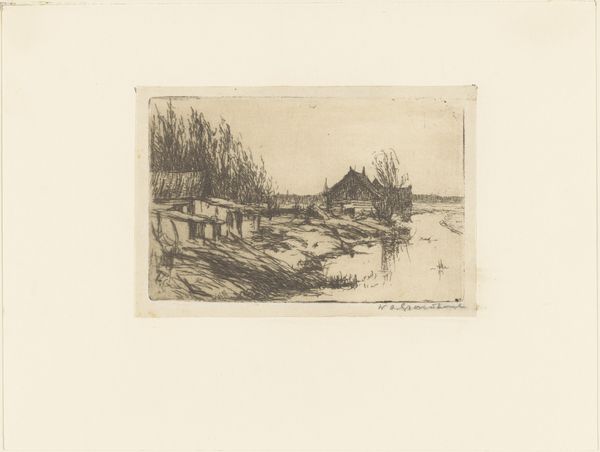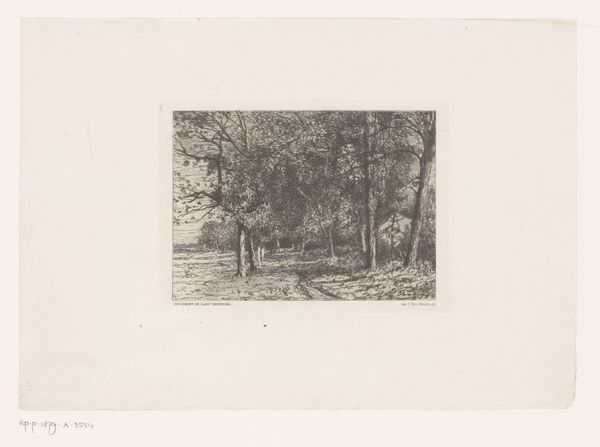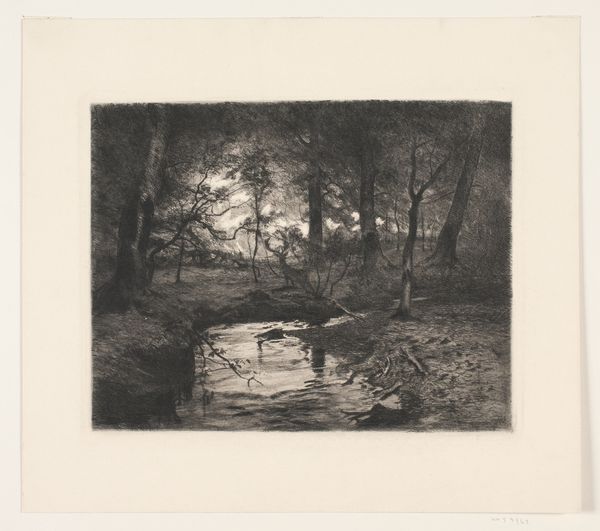
print, etching
# print
#
etching
#
landscape
#
realism
Dimensions: height 259 mm, width 418 mm
Copyright: Rijks Museum: Open Domain
Curator: Auguste Danse’s “Nocturnal Snow Landscape with Shadowy Figures on the Path,” created around 1885, captures a fleeting moment. The print, etched with remarkable detail, offers a glimpse into a winter's night. Editor: The stark contrast immediately strikes me. It's eerie, but peaceful too. The composition pulls your eye down the path, making you a participant in this quiet, snowy world, possibly suggesting a broader perspective on how communities navigate isolation and marginalization. Curator: The medium really informs that mood. Danse’s use of etching allowed him to create incredibly fine lines, mimicking the texture of snow and bare trees, so that everything is crafted very deliberately and it serves to explore both the surface level composition of a common landscape scene and also evoke an emotional response. Editor: I see what you mean about control and craftsmanship but it’s the shadowy figures along that path that really grab my attention. Their presence speaks volumes, don't you think? What was it like to live during the late 19th century as a rural worker trying to subsist during the hardest months of the year? Curator: Well, certainly, considering the economic and social conditions in 1885—the era of industrial expansion but also significant class disparities and intense manual labour for a majority of people—Danse may very well be representing the realities of daily life. But look at how the path itself is rendered. You can almost feel the crunch of the snow underfoot, which in turn is only achieved thanks to the material choice of etching allowing an impressive range of visual and tactile sensations! Editor: True, but beyond the sheer craftsmanship, what narratives are being evoked by this choice to render the working classes not individually but anonymously, cast in shadow as though their lives themselves exist in some form of umbral existence at the periphery? Does the social class have as much impact on the artwork, especially as that relates to modern labour practices in the present day? Curator: Perhaps it’s a reflection of how fleeting life felt but maybe more immediately how essential it was for workers to take on long treks such as the one here and brave weather conditions in order to accomplish that goal of maintaining that lifestyle and surviving. That it was indeed as precarious as ice beneath one’s feet. It also could simply suggest his material capabilities, I think. Editor: Perhaps we can interpret those anonymous figures as an acknowledgement of those realities then. The act of the journey as survival itself, beautifully captured within a very bleak context, indeed! Curator: It really allows for introspection as well, beyond a pure celebration of a skill executed well through specific methods! Editor: A haunting slice of life!
Comments
No comments
Be the first to comment and join the conversation on the ultimate creative platform.
